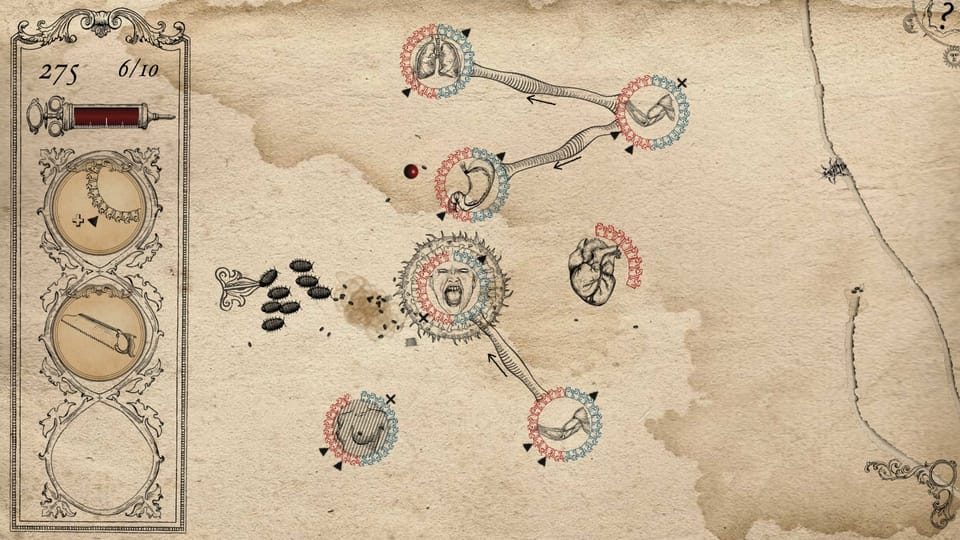You’ve defended towers, now defend your gross internal organs

It’s not until you fall sick that you appreciate good health. You enter a state of hyper-sensitivity, suddenly realizing the labor of your every action, every movement, and every breath. Sometimes, when ill, I sit up in bed to fully concentrate my newfound awareness of the coiling and squelching of my inner systems, and think to my medicine-drunk self, “Man, being alive takes a lot of hard work.”
But, even then, it’s not possible to truly grasp the scale of your body’s to-do list that it’s constantly ticking off and rewriting with every passing second. When you think about it, most of us have the privilege of running on automatic, only occasionally clutching our chest with worry when our precious organs practice an irregular beat. I like to think of that as your body asking for some recognition for everything it does.
So, say it with me: Thanks body. Thody.
You draw a system of veins between each organ and muscle
I say all this after having swapped places with my bodily organs in the real-time strategy game Prophour23. In it, you have to protect a beating heart from a louse invasion (yeah, eww, seriously) by growing muscles, “scream organs”, and bones. Success is found in constructing clockwork co-ordination between the innards of this grossly abstracted organism (the title screen suggests it’s a fish).
Attempts to do this haven’t gone well for me so far. Put it this way, it took me 15 minutes just to get through the tutorials, learning how each organ functions. And, on this note, the appropriation of certain body parts as defense units makes for some interesting translations.
The heart and stomach generate blood that drips down the screen; the energy source used to grow further organs. Eyes act as searchlights when the day-night cycle plunges you in darkness. You draw a system of veins between each organ and muscle in order to power them, while stretching bones out from ribcages to hands provides a solid wall that confuses the louse’s path. Your main defense are thorns, stalks of which you stretch around like barbed wire, and place in turret-like “scream” circles.
But the one that made me slightly uncomfortable were the breasts. In Prophour23, they’re stripped of their primary function—to feed young—and used instead to attract the louse toward them and away from your vital organs. It’s a gesture that provokes metaphor: you are using the physical attraction of your body to avoid letting in those that would otherwise break your heart. The introduction of the breasts seems to equate the louse to sex-driven beasts, as they forget their primary goal due to the mammary lure, crawling all around it with a disturbing enthusiasm.
This never lasts long, mind, as Prophour23 stresses the difficulty of creating an interconnected highway of bodily innards that can self-protect from bacterial bugs and harmful disease. It appeals to me for two main reasons. Firstly, its presentation has the unclean feel of a Victorian surgery: it all takes place on old brown paper and consists of lavishly pen-drawn scientific diagrams of the body and surgical instruments.
Secondly, it is as laborious as trying to puppeteer an alien organism should be. It’s hard work, and when the organs start to fail due to infection it really makes you panic. Playing Prophour23 has the urgency and repulsiveness of picking through someone’s guts, trying to untangle their intestines, and shoving them back in to prevent them from dying.
You can purchase Prophour23 for $10 on its official website, as well as Steam.



